
ПОСОБИЕ_English_for_economists_посл
..PDF
надзор за, главный менеджер, акционер, политика компании, разработать и реализовать, назначение, руководитель отдела, преодолеть, в соответствии,
стратегический план, основной надзор, менеджер среднего звена, широкая
общественность, определить и контролировать, менеджеры первого (низового) звена,
исполнительный директор, диагностировать и решать проблемы.
7. Match the words with their definitions.
Manager |
Supervisor |
Middle-level |
|
manager |
|||
|
|
||
The board |
Top-level |
First-level |
|
of directors |
manager |
manager |
devotes more time to organizational and directional functions
focuses on controlling and directing
includes non-executive directors and executive directors
an individual who is in charge of a certain group of tasks, or a certain subset of
a company
responsible for controlling and overseeing the entire organization
has the responsibility of assigning employees tasks, guiding, making recommendations, suggestions, etc.
8.Discuss with the group the following topics:
1.Describe the functions of the managers on each level.
2.Make up a dialogue. One of you is an employee; the other is a top-level manager. Explain the peculiarities of the future job.
101

Text 7B
1.Before you start.
What are the main duties of a manager?
What are the functions of managers?
2.Read the words and learn them by heart. Make up your
own sentences with them.
1.Execution – исполнение, выполнение
2.Planning – планирование
3.Organizing – организация
4.Leading – управление, ведение, лидерство
5.Controlling – контроль, контролирование
6.Objective – цель
7.Competitor – конкурент
8.To forecast – прогнозировать
9.To evaluate – оценивать
10.Strengths and weaknesses of the organization – сильные и слабые стороны организации
11.To assume – предполагать
12.To allocate – размещать
13.Accomplishment – достижение, выполнение
14.Organization chart – структура организации
15.To departmentalize – делиться на отделы
16.Subordinate – подчиненный
17.Persuasively – убедительно
18.Revenue – выручка
19.A budget audit – аудит бюджетных средств
20.Performance audit – аудит выполнения
21.Verification – проверка
102
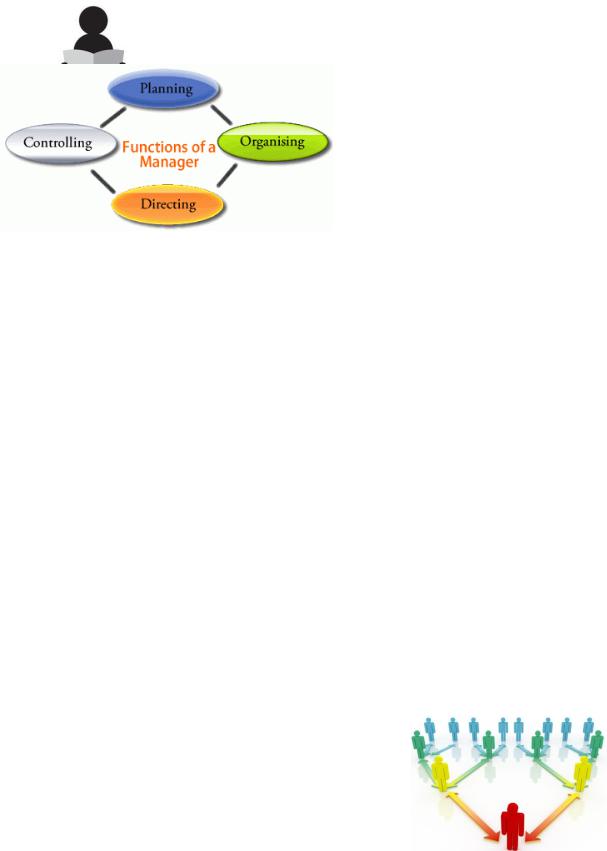
3. Read the text 7B, translate it and compare your ideas in ex.1 with the facts.
The Functions of Managers
Managers are responsible for the processes of getting activities completed efficiently with and through other people and setting and achieving the firm‘s goals through the execution of four basic management functions: planning, organizing, leading, and controlling.
Planning
Planning is the function of management that involves setting objectives and determining a course of action for achieving those objectives. Planning requires that managers be good decision makers. Planning is a process consisting of several steps. The process begins with environmental scanning simply means that planners must apply critical approach to economic conditions, competitors, and customers. Planners must then attempt to forecast future conditions. These forecasts form the basis for planning.
Planners must establish objectives, which are statements of what needs to be achieved and when. Planners must then identify alternative courses of action for achieving objectives. After evaluating the various alternatives, planners must make decisions about the best courses of action for achieving objectives. They must then formulate necessary steps and ensure effective implementation of plans. Finally, planners must constantly evaluate the success of their plans and take corrective action when necessary.
Organizing
Organizing is the function of management that involves developing an organizational structure and allocating human resources to ensure the accomplishment of objectives. The structure of the organization is the framework within which effort is coordinated. The structure is usually represented by an organization chart,
which provides a graphic representation of the chain of command within an organization.
Leading
Leading involves the social and informal sources of
influence that you use to inspire action taken by others. If http://www.leadershipwithsass.com/wp-con
103

managers are effective leaders, their subordinates will be enthusiastic about exerting effort to attain organizational objectives.
Managers must first understand their subordinates‘ personalities, values, attitudes, and emotions.
Studies of motivation and motivation theory provide important information about the ways in which workers can be energized to put forth productive effort;
Studies of communication provide direction as to how managers can effectively and
persuasively communicate;
Studies of leadership and leadership style provide information regarding questions, such as, ―What makes a manager a good leader?‖ and ―In what situations are certain leadership styles most appropriate and effective?‖
Controlling
Controlling involves ensuring that performance does not deviate from standards. Controlling consists of three steps, which include
establishing performance standards,
comparing actual performance against standards, and
taking corrective action when necessary.
Effective controlling requires the existence of plans, since planning provides the necessary performance standards or http://www.amhoff.de/fileadmin objectives. Controlling also requires a clear understanding of
where responsibility for deviations from standards lies. Two traditional control techniques are budget and performance audits. An audit involves an examination and verification of records and supporting documents. A budget audit provides information about where the organization is with respect to what was planned or budgeted for, whereas a performance audit might try to determine whether the figures reported are a reflection of actual performance.
The management functions of planning, organizing, leading, and controlling are widely considered to be the best means of describing the manager‘s job, as well as the best way to classify accumulated knowledge about the study of management.
(Source: Principles of Management http://www.saylor.org)
4.Answer the following questions.
1.What functions of management do you know?
2.What is planning?
3.What steps does planning consist of?
104
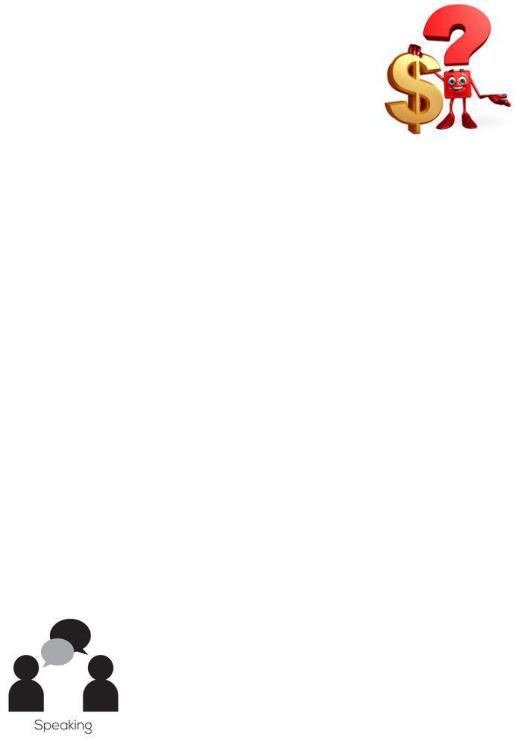
4.What is organizing?
5.What is leading?
6.What behavioural studies do you know?
7.What is controlling?
8.What steps does controlling consist of?
9.What are traditional control techniques?
10.What do they provide?
5. Read about different types of plan and planning and give a short outline.
There are many different types of plans and planning.
Strategic planning involves analyzing competitive opportunities and threats, as well as the strengths and weaknesses of the organization, and then determining how to position the organization to compete effectively in their environment. Strategic planning has a long time frame, often three years or more. An organization‘s top management most often conducts strategic planning.
Tactical planning is intermediate-range (one to three years) planning that is designed to develop relatively concrete and specific means to implement the strategic plan. Middlelevel managers often engage in tactical planning.
Operational planning generally assumes the existence of organization-wide or subunit goals and objectives and specifies ways to achieve them. Operational planning is short-range (less than a year) planning.
6.Discuss with the group the following topics:
1.What qualities should a good manager possess?
2.Make up a portrait of an effective manager, real or imaginary.
105

8. Find the equivalents.
Проводить; конкурировать; тактическое планирование; оперативное планирование;
цели и задачи в масштабах всей организации или субъединиц; лица, принимающие решения; достигать; клиент, покупатель; постановка и достижение целей фирмы;
сканирование окружающей среды; эффективная реализация планов; стратегическое планирование; отклоняться; накапливать; соответствующий; указывать; выдвигать;
личность подчиненного; краткосрочный.
|
|
|
|
|
|
1 |
Setting and achieving the firm‘s goals – |
|
|
|
|
2 |
Decision makers – |
|
|
|
|
3 |
Environmental scanning – |
|
|
|
|
4 |
Customer – |
|
|
|
|
5 |
Effective implementation of plans – |
|
|
|
|
6 |
Strategic planning – |
|
|
|
|
7 |
To compete – |
|
|
|
|
8 |
To conduct – |
|
|
|
|
9 |
Tactical planning – |
|
|
|
|
10 |
Operational planning – |
|
|
|
|
11 |
Organization-wide or subunit goals and objectives – |
|
|
|
|
12 |
To specify – |
|
|
|
|
13 |
Short-range – |
|
|
|
|
14 |
To attain – |
|
|
|
|
15 |
Subordinate‘s personality – |
|
|
|
|
16 |
To put forth – |
|
|
|
|
17 |
Appropriate – |
|
|
|
|
18 |
To deviate – |
|
|
|
|
19 |
To accumulate – |
|
|
|
|
106
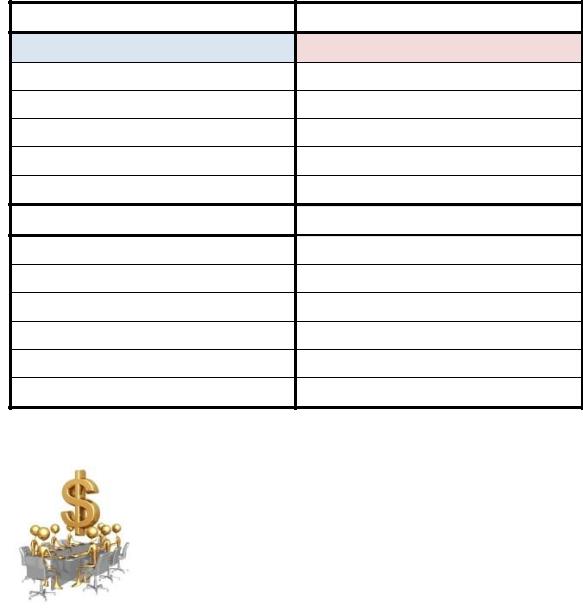
8. There are four main roles of managers: planning, organizing, leading and controlling in this table. There is a list of management functions under the table. The task is to write each function under the correct role.
Management functions.
taking on new staff, communicating with staff, comparing results with targets, deciding strategy, empowering staff to take decisions, identifying change, identifying needs, managing resources, monitoring quality standards, motivation, putting systems in place, setting objectives, team-building supervision, time management.
Planning |
|
Organizing |
|
|
|
|
|
|
taking on new staff
|
|
|
|
|
|
|
|
|
|
|
|
|
|
|
|
|
|
Leading |
|
Controlling |
|
|
|
|
|
|
|
|
|
|
|
|
|
|
|
|
|
|
|
|
|
|
|
|
Text 7С
1.Before you start.
What types of companies do you know?
How can a company be organized?
107
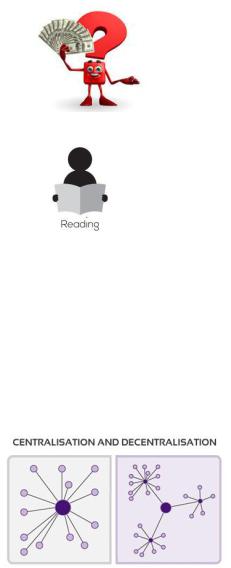
2.Read the words and learn them by heart. Make up your own sentences with them.
1.Organizational structure – организационная структура
2.Centralization – централизация
3.Formalization – формализация
4.Hierarchical levels – иерархические уровни
5.Centralized companies – централизованные компании
6.Decentralized companies – децентрализованные компании
7.Handbook – руководство
8.Ambiguity – двусмысленность
10.Frontline employee – рядовой сотрудник
11.Monitor employee – старший, ведущий сотрудник, контролер
12.Generalist – эрудит, универсал
13.To be in charge – быть ответственным
14.Anticipating – предвидение
15.Agile – проворный
16.Mental abilities – умственные способности
3.Read the text 7C, translate it and compare your ideas in ex.1 with the facts.
Organizational Structure
Organizational structure refers to how individual and team work within an organization are coordinated. To achieve organizational goals and objectives, individual work needs to be coordinated and managed. Organizations can function within a number of different structures, each possessing distinct advantages and disadvantages.
We will review four aspects of structure: centralization, formalization, hierarchical levels, and departmentalization. We view these four elements as the building blocks, or
elements, making up a company‘s structure.
Centralization
Centralization is the degree to which decisionmaking authority is concentrated at higher levels in an organization. In centralized companies, many important
https://www.kbresearch.com)
108
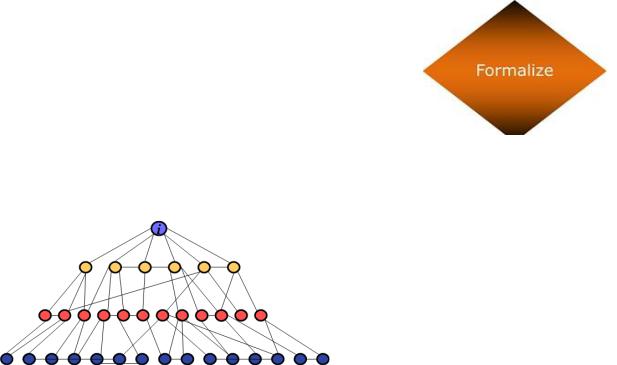
decisions are made at higher levels of the hierarchy, whereas in decentralized companies, decisions are made and problems are solved at lower levels by employees who are closer to the problem in question.
Formalization |
|
Formalized structures are those in which there are many |
|
written rules and regulations. These structures control employee |
|
behavior using written rules, so that employees have little |
|
autonomy to make their own decisions. An advantage of |
|
formalization is that it makes employee behavior more |
|
predictable. Whenever a problem at work arises, employees |
http://medicine.yale.edu/cmi/glides/Imag |
know to turn to a handbook or a procedure guideline. |
|
Hierarchical Levels |
|
Another important element of a company‘s structure is the number of levels it has in its hierarchy. Keeping the size of the organization constant, tall structures have several layers of
management between frontline
http://cyvision.ifsc.usp.br/cyvision/ima
employees and the top level, while flat structures consist of only a few layers. In tall structures, the number of employees reporting to each manager tends to be smaller, resulting in greater opportunities for managers to supervise and monitor employee activities. In contrast, flat structures involve a larger number of employees reporting to each manager. In such a structure, managers will be relatively unable to provide close supervision, leading to greater levels of freedom of action for each employee.
Research indicates that flat organizations provide greater need satisfaction for employees and greater levels of self-actualization.
Departmentalization
Organizational structures differ in terms of departmentalization, which is broadly categorized as either functional or divisional.
Organizations using functional structures group jobs based on similarity in functions. Such structures may have departments such as marketing, manufacturing, finance, accounting, human resources, and information technology. In these structures, each person serves a specialized role and handles large volumes of transactions.
109
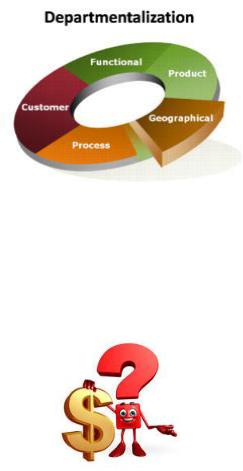
In organizations using divisional structures, departments represent the unique products, services, customers, or geographic locations the company is serving. Thus each unique product or service the company is producing will have its own department. Within each department, functions such as marketing, manufacturing, and other roles are replicated. In these structures,
employees act like generalists as opposed to specialists. Instead of
performing specialized tasks, employees will be in charge of performing many different tasks in the service of the product.
(Source: Principles of Management http://www.saylor.org)
4.Answer the following questions.
1.What are four aspects of structure?
2.What is centralization?
3.How do centralized and decentralized companies differ?
4.How can you define ―formalization‖?
5.What is an advantage of formalization?
6.What are hierarchical levels in tall structures?
7.What are hierarchical levels in flat structures?
8.What is departmentalization?
9.What types of departmentalization do you know?
10.Define the functions of departments in organizations using functional and divisional structures.
5.Give English equivalents of the following words and word combinations from Text
7С.
Структура организации, определенные преимущества и недостатки,
руководитель, принимающий решения, на высших уровнях, формализованные организации, поведение работника, письменные правила, несколько уровней управления, передовые сотрудники, контролировать и отслеживать действия сотрудников, линейная организационная структура, тщательное наблюдение (или
110
